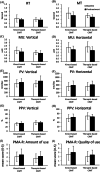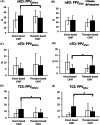Comparative effects of kinect-based versus therapist-based constraint-induced movement therapy on motor control and daily motor function in children with unilateral cerebral palsy: a randomized control trial
- PMID: 36703170
- PMCID: PMC9880374
- DOI: 10.1186/s12984-023-01135-6
Comparative effects of kinect-based versus therapist-based constraint-induced movement therapy on motor control and daily motor function in children with unilateral cerebral palsy: a randomized control trial
Abstract
Background: Constraint-induced movement therapy (CIMT) is a prominent neurorehabilitation approach for improving affected upper extremity motor function in children with unilateral cerebral palsy (UCP). However, the restraint of the less-affected upper extremity and intensive training protocol during CIMT may decrease children's motivation and increase the therapist's workload and family's burden. A kinect-based CIMT program, aiming to mitigate the concerns of CIMT, has been developed. The preliminary results demonstrated that this program was child-friendly and feasible for improving upper extremity motor function. However, whether the kinect-based CIMT can achieve better or at least comparable effects to that of traditional CIMT (i.e., therapist-based CIMT) should be further investigated. Therefore, this study aimed to compare the effects of kinect-based CIMT with that of therapist-based CIMT on upper extremity and trunk motor control and on daily motor function in children with UCP.
Methods: Twenty-nine children with UCP were recruited and randomly allocated to kinect-based CIMT (n = 14) or therapist-based CIMT (n = 15). The intervention dosage was 2.25 h a day, 2 days a week for 8 weeks. Outcome measures, namely upper extremity and trunk motor control and daily motor function, were evaluated before and after 36-h interventions. Upper extremity and trunk motor control were assessed with unimanual reach-to-grasp kinematics, and daily motor function was evaluated with the Revised Pediatric Motor Activity Log. Between-group comparisons of effectiveness on all outcome measures were analyzed by analysis of covariance (α = 0.05).
Results: The two groups demonstrated similar improvements in upper extremity motor control and daily motor function. In addition, the kinect-based CIMT group demonstrated greater improvements in trunk motor control than the therapist-based CIMT group did (F(1,28) > 4.862, p < 0.036).
Conclusion: Kinect-based CIMT has effects comparable to that of therapist-based CIMT on UE motor control and daily motor function. Moreover, kinect-based CIMT helps decrease trunk compensation during reaching in children with UCP. Therefore, kinect-based CIMT can be used as an alternative approach to therapist-based CIMT.
Trial registration: ClinicalTrials.gov Identifier: NCT02808195. Registered on 2016/06/21, https://clinicaltrials.gov/ct2/show/NCT02808195 .
Keywords: Cerebral palsy; Children; Constraint-induced therapy; Upper extremity; Virtual reality.
© 2023. The Author(s).
Conflict of interest statement
We have no conflict of interest.
Figures



References
-
- Ramey SL, Deluca S. Pediatric constraint-induced movement therapy: history and definition. Handbook of pediatric constraint-induced movement therapy (CIMT): a guide for occupational therapy and health care clinicians, researchers, and educators. AOTA Press; 2013. 10.7139/2017.978-1-56900-472-2.

